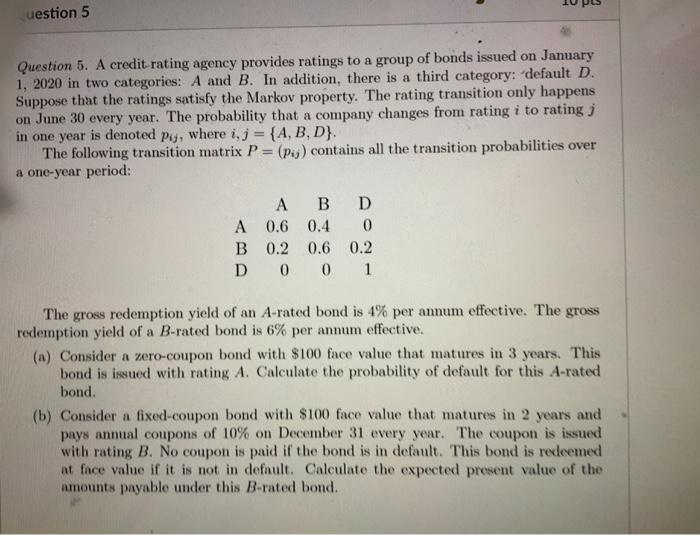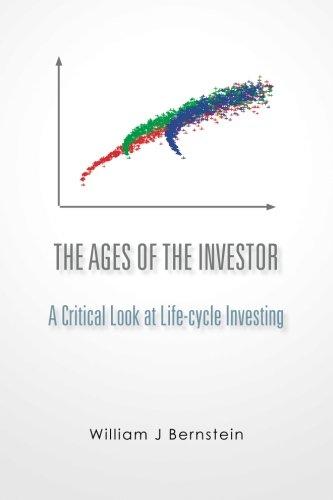Please give working by hand not excel

uestion 5 Question 5. A credit rating agency provides ratings to a group of bonds issued on January 1, 2020 in two categories: A and B. In addition, there is a third category: default D. Suppose that the ratings satisfy the Markov property. The rating transition only happens on June 30 every year. The probability that a company changes from rating i to rating i in one year is denoted Piy, where i, j = {A, B, D}. The following transition matrix P = (P) contains all the transition probabilities over a one-year period: B D A 0.6 0.4 0 B 0.2 0.6 0.2 D 0 0 1 The gross redemption yield of an A-rated bond is 4% per annum effective. The gross redemption yield of a B-rated bond is 6% per annum effective. (a) Consider a zero-coupon bond with $100 face value that matures in 3 years. This bond is issued with rating A. Calculate the probability of default for this A-rated bond. (b) Consider a fixed-coupon bond with $100 face value that matures in 2 years and pays annual coupons of 10% on December 31 every year. The coupon is issued with rating B. No coupon is paid if the bond is in default. This bond is redeemed at face value if it is not in default. Calculate the expected present value of the amounts payable under this B-rated bond. uestion 5 Question 5. A credit rating agency provides ratings to a group of bonds issued on January 1, 2020 in two categories: A and B. In addition, there is a third category: default D. Suppose that the ratings satisfy the Markov property. The rating transition only happens on June 30 every year. The probability that a company changes from rating i to rating i in one year is denoted Piy, where i, j = {A, B, D}. The following transition matrix P = (P) contains all the transition probabilities over a one-year period: B D A 0.6 0.4 0 B 0.2 0.6 0.2 D 0 0 1 The gross redemption yield of an A-rated bond is 4% per annum effective. The gross redemption yield of a B-rated bond is 6% per annum effective. (a) Consider a zero-coupon bond with $100 face value that matures in 3 years. This bond is issued with rating A. Calculate the probability of default for this A-rated bond. (b) Consider a fixed-coupon bond with $100 face value that matures in 2 years and pays annual coupons of 10% on December 31 every year. The coupon is issued with rating B. No coupon is paid if the bond is in default. This bond is redeemed at face value if it is not in default. Calculate the expected present value of the amounts payable under this B-rated bond








